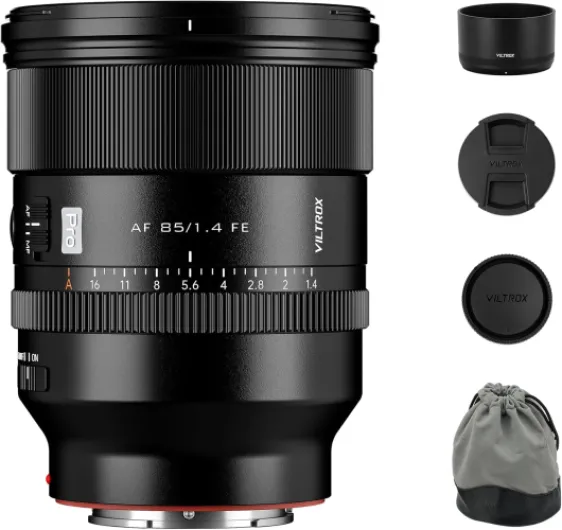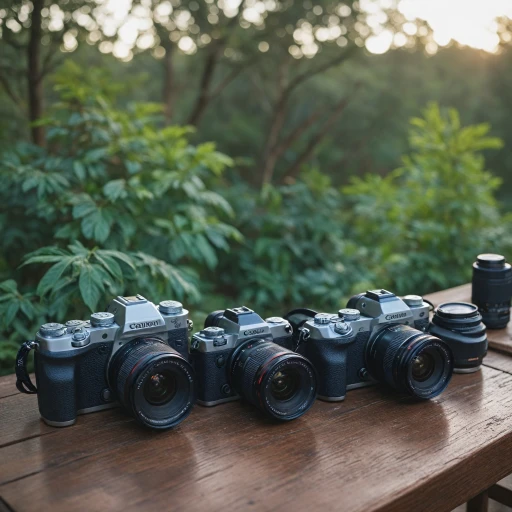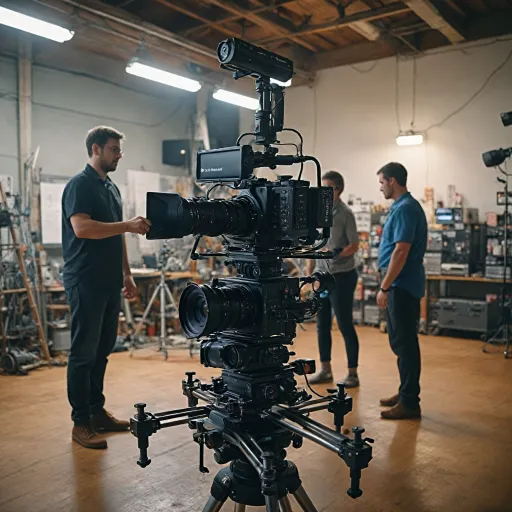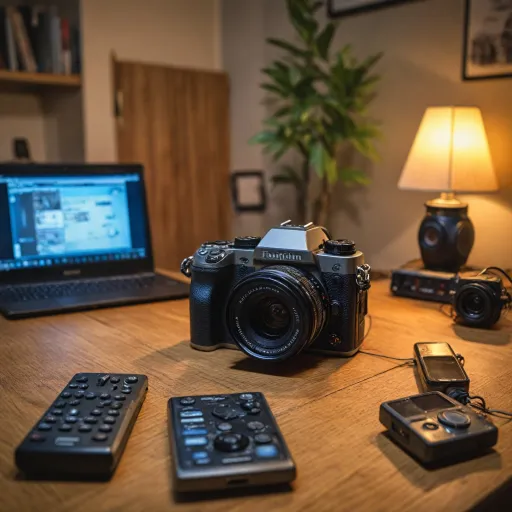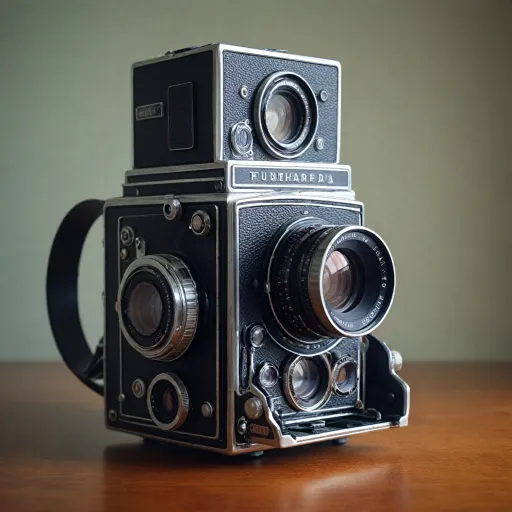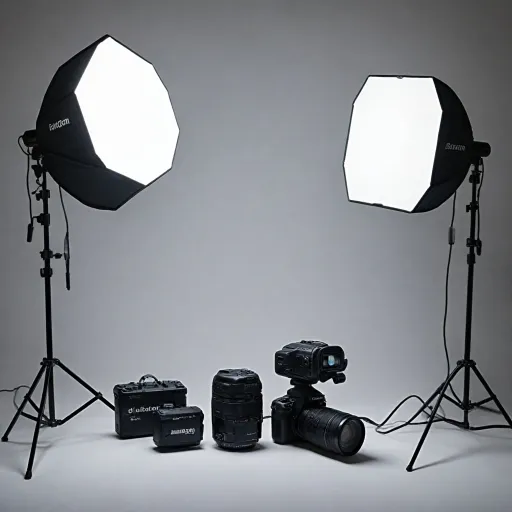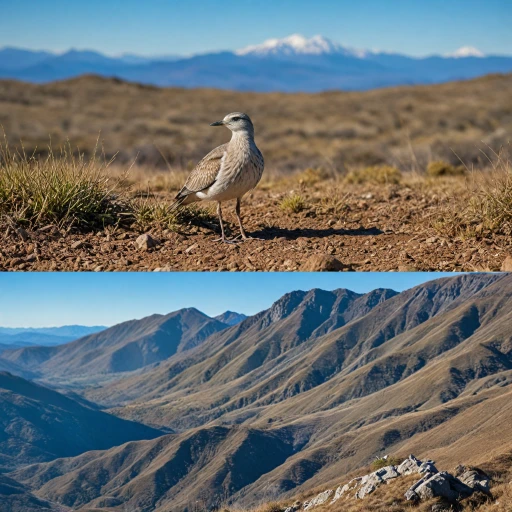
Understanding lens compatibility with the Sony a7III
How to Ensure Your Lens Works with the Sony a7III
When choosing the best lens for your Sony a7III, understanding compatibility is crucial. The Sony a7III uses the E-mount system, which supports a wide range of lenses, including Sony’s own lineup and third-party options from brands like Sigma and Tamron. Not every lens will deliver the same autofocus performance, image quality, or features, so it’s important to know what to look for.
- Mount type: The Sony a7III is built for E-mount lenses. While you can use A-mount or other lenses with adapters, native E-mount lenses offer the best autofocus and image stabilization performance.
- Full-frame coverage: The a7III is a full-frame camera, so to get the best image quality, choose lenses designed for full-frame sensors. APS-C lenses will work, but they crop your image and reduce resolution.
- Autofocus and electronic features: Modern lenses often include advanced autofocus motors and electronic contacts. For the best experience, look for lenses that support fast, silent autofocus and in-lens stabilization, especially if you shoot video or fast-moving subjects.
- Build quality and weather sealing: If you plan to shoot outdoors or in challenging conditions, consider weather sealed lenses. These offer extra protection against dust and moisture, which helps maintain sharpness and reliability over time.
Lens compatibility also affects your creative options. For example, wide angle lenses are great for landscapes, while telephoto lenses excel in wildlife or sports photography. The right lens can enhance your street photography or help you capture the best portrait with beautiful background blur. If you’re interested in macro or ultra wide shots, make sure the lens supports those features natively for the Sony iii.
For photographers exploring manual focus or adapting vintage lenses, understanding focus mechanisms and compatibility is key. You can learn more about adapting lenses and focus techniques in this guide to quick focus systems.
As you move forward, consider how prime and zoom lens options fit your style, and pay attention to focal length, aperture, and build quality. These factors all contribute to the overall image quality and versatility of your camera setup.
Prime vs zoom lenses: which is right for you?
Comparing Prime and Zoom Lenses for Sony a7III
When choosing the best lens for your Sony a7III, one of the first decisions is between a prime lens and a zoom lens. Each type offers unique advantages, and your choice depends on your photography style, desired image quality, and shooting conditions.
- Prime lenses have a fixed focal length, such as 35mm or 85mm. They are known for their wide apertures, which allow more light into the camera. This results in excellent low-light performance, beautiful background blur (bokeh), and sharpness. Prime lenses are often lighter and more compact, making them ideal for street photography or travel.
- Zoom lenses offer a range of focal lengths, like 24-70mm or 70-200mm. This flexibility lets you quickly adapt to different scenes without changing lenses. Modern zoom lenses for the Sony iii series, including options from Sony and Sigma, deliver impressive image quality and autofocus performance. They are perfect for events, landscapes, and situations where you need to cover a wide or telephoto range.
Key Features to Consider
- Aperture: A wider aperture (lower f-number) is great for low-light and creative depth of field. Prime lenses often excel here, but some zoom lenses also offer wide apertures.
- Build quality and weather sealing: If you shoot outdoors, look for weather sealed lenses for durability in challenging conditions.
- Autofocus: Both prime and zoom lenses for the Sony a7III can offer fast, reliable autofocus. Sigma and Sony best lenses are known for their autofocus features.
- Image stabilization: Some zoom lenses include built-in stabilization, which helps maintain sharpness at longer focal lengths or slower shutter speeds.
Which Lens Type Suits Your Photography?
If you prioritize ultimate image quality, sharpness, and wide apertures for best portrait or best macro shots, a prime lens is a strong choice. For versatility, such as capturing both wide angle and telephoto images without swapping lenses, a zoom lens is often the best lens for everyday use.
Consider your main photography interests—whether it’s landscapes, street photography, or events. The right lens for your Sony iii camera will balance focal length, build quality, and features that match your needs. For more on integrating your camera setup with other gear, check out this guide on using an HDMI RF modulator with your digital camera setup.
Top lens choices for portraits, landscapes, and everyday use
Portraits: Achieving Beautiful Background Blur
For portrait photography, a lens with a wide aperture is essential. The Sony FE 85mm f/1.8 is a popular choice for the Sony a7III. It delivers excellent sharpness, smooth background blur (bokeh), and reliable autofocus. If you want even more background separation and low-light performance, consider the Sony FE 85mm f/1.4 GM. Both lenses offer solid build quality and weather sealing, making them suitable for various environments.
- Focal length: 85mm is ideal for flattering portraits
- Aperture: Wide apertures (f/1.4 or f/1.8) for shallow depth of field
- Autofocus: Fast and accurate for capturing sharp images
Landscapes: Capturing Wide Vistas
Landscape photographers often look for a wide angle lens with excellent edge-to-edge sharpness. The Sony FE 16-35mm f/4 is a versatile zoom lens that covers a useful range for wide scenes. For those who want the best wide angle image quality, the Sony FE 16-35mm f/2.8 GM is a top performer, offering a brighter aperture and weather-sealed build. Sigma also offers the 14-24mm f/2.8 DG DN Art, which is praised for its sharpness and value.
- Zoom range: 16-35mm or wider for expansive views
- Build quality: Weather sealed for outdoor use
- Sharpness: Consistent across the frame
Everyday Use: Versatility and Convenience
If you want a lens that can handle a variety of situations, a standard zoom lens is often the best lens for everyday photography. The Sony FE 24-105mm f/4 G OSS offers a broad focal length range, optical image stabilization, and reliable autofocus. Its build quality is robust, and it is weather sealed for added durability. For those on a tighter budget, the Sigma 28-70mm f/2.8 DG DN Contemporary is a compact and lightweight alternative with impressive image quality.
- Focal length: 24-105mm covers wide angle to short telephoto
- Features: Image stabilization and fast autofocus
- Build: Durable, weather sealed options available
Specialty Lenses: Macro and Telephoto Options
For close-up photography, the Sony FE 90mm f/2.8 Macro G OSS is widely considered the best macro lens for the Sony a7III. It offers sharpness, accurate focus, and image stabilization. If you need a best telephoto lens for wildlife or sports, the Sony FE 70-200mm f/2.8 GM OSS II provides excellent reach, fast autofocus, and weather-sealed build quality.
| Lens Type | Best Choice | Key Features |
|---|---|---|
| Portrait | Sony FE 85mm f/1.8 | Wide aperture, sharpness, bokeh |
| Landscape | Sony FE 16-35mm f/4 | Wide angle, weather sealed, sharp |
| Everyday | Sony FE 24-105mm f/4 G OSS | Versatile zoom range, image stabilization |
| Macro | Sony FE 90mm f/2.8 Macro G OSS | Macro, sharpness, stabilization |
| Telephoto | Sony FE 70-200mm f/2.8 GM OSS II | Telephoto reach, fast autofocus, weather sealed |
When choosing the best lens for your Sony a7III, consider your photography style, desired focal length, and whether you need features like weather sealing or image stabilization. If you want to experiment with different lenses before buying, renting camera gear can be a smart way to test what works best for you.
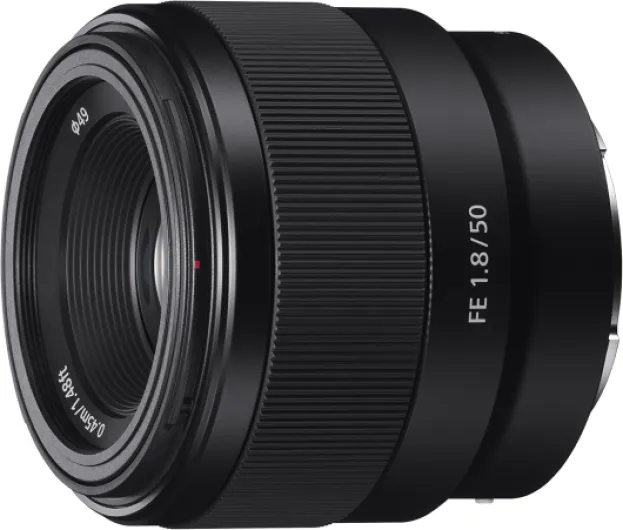
Autofocus performance and image stabilization considerations
How Autofocus and Stabilization Impact Your Shots
When selecting the best lens for your Sony a7III, autofocus performance and image stabilization are crucial features to consider. The camera’s advanced autofocus system is a major strength, but the lens you choose can make a significant difference in how quickly and accurately your camera locks onto subjects. This is especially important for fast-moving scenes, street photography, and capturing sharp images in low light.
- Autofocus speed and accuracy: Native Sony lenses, such as those in the G Master series, are optimized for the a7III’s autofocus system. They typically offer fast, silent, and precise focusing. Third-party options, like Sigma’s Art series, have made great strides in compatibility and can deliver excellent autofocus performance, though some models may be slightly slower or noisier.
- Focus modes: The a7III supports a wide range of autofocus modes, including Eye AF and Real-time Tracking. Lenses with advanced autofocus motors (like Sony’s Direct Drive SSM or Sigma’s HSM) will help you get the most out of these features, whether you’re shooting portraits, wildlife, or street scenes.
- Manual focus: For genres like macro or landscape photography, smooth manual focus rings and focus-by-wire systems can offer precise control, especially when paired with the camera’s focus peaking and magnification tools.
Image Stabilization: When It Matters Most
The Sony a7III features in-body image stabilization (IBIS), which compensates for camera shake across five axes. However, pairing IBIS with a lens that has optical stabilization (OSS) can further improve image quality, especially at longer focal lengths or slower shutter speeds. This is particularly useful for telephoto and zoom lenses, where even slight movements can cause blur.
- Best telephoto and zoom lens options: Look for lenses with built-in stabilization if you plan to shoot handheld at the long end of the zoom range. This is key for wildlife, sports, and event photography.
- Wide angle and prime lens choices: While stabilization is less critical for ultra wide or best wide lenses, it can still help in low-light situations or when shooting video.
Build Quality and Weather Sealing
Autofocus and stabilization are only part of the equation. Build quality and weather sealing are also important, especially if you shoot outdoors or in challenging conditions. Many of Sony’s best lenses, as well as select Sigma and third-party models, offer robust construction and weather-sealed designs. This ensures your gear remains reliable, whether you’re capturing landscapes in the rain or street photography in dusty environments.
Key Takeaways for Lens Selection
- Choose lenses with fast, accurate autofocus for action, portraits, and street photography.
- Consider optical stabilization for telephoto and zoom lens options to maximize sharpness.
- Prioritize build quality and weather sealing for durability and consistent image quality in any setting.
By focusing on these features, you’ll ensure your Sony a7III delivers the best possible results across a wide range of photography styles and conditions.
Budget-friendly lens options without sacrificing quality
Affordable Lenses That Deliver Impressive Results
Finding the best lens for your Sony a7III doesn’t always mean spending a fortune. There are several budget-friendly lenses that offer excellent image quality, reliable autofocus, and solid build quality. Whether you’re interested in wide angle, telephoto, or prime lens options, the market has something for every photography style and need.
- Sigma Contemporary Series: Sigma’s lenses for Sony E-mount, like the Sigma 30mm f/1.4 DC DN, are known for sharpness and fast aperture. These lenses are great for street photography, portraits, and everyday use, offering a balance between price and performance.
- Sony FE 50mm f/1.8: This prime lens is a favorite for those starting with the Sony a7III. It provides a classic focal length for portraits and general photography, with decent autofocus and image quality at a very accessible price.
- Sony FE 28-70mm f/3.5-5.6 OSS: As a kit zoom lens, it covers a versatile zoom range for landscapes, travel, and family moments. While not the fastest in aperture, it includes image stabilization and is lightweight for everyday use.
- Samyang/Rokinon AF 35mm f/2.8 FE: This ultra wide and compact lens is perfect for street and travel photography. It’s affordable, sharp, and offers reliable autofocus performance on the Sony iii camera.
Key Features to Look for in Budget Lenses
- Autofocus Performance: Even in lower-priced lenses, look for models with fast and accurate autofocus. This is crucial for capturing sharp images, especially in dynamic situations.
- Build Quality: While you may not get full weather sealed construction, many affordable lenses still offer solid build and decent durability. Pay attention to the materials and mount quality.
- Image Quality: Budget lenses can still deliver impressive sharpness and color rendition. Check sample images and reviews to ensure the lens meets your expectations for your style of photography.
- Versatility: Lenses with a wide zoom range or a classic focal length can cover more scenarios, making them a smart choice for those building their kit on a budget.
Stretching Your Budget Further
Consider buying used or refurbished lenses from reputable dealers. This can help you access higher-end features, such as better aperture or weather sealing, at a lower price. Also, third-party brands like Sigma and Tamron offer excellent alternatives to Sony’s own lenses, often with similar or even better performance for less.
Remember, the best lens for your Sony iii is the one that fits your photography needs and budget, while still delivering the image quality and features you value most.
Tips for maintaining and caring for your lenses
Simple habits for long-lasting lens performance
Keeping your lens in top shape is essential for maintaining the best image quality and autofocus performance with your Sony a7III. Whether you use a prime lens for street photography or a zoom lens for landscapes, a few basic habits can extend the life and sharpness of your gear.
- Use a lens cap and hood: Always cover your lens when not in use. A lens hood adds extra protection against bumps and stray light, especially for wide angle and telephoto lenses.
- Clean with care: Use a soft microfiber cloth and a blower to remove dust and smudges. Avoid harsh chemicals that can damage coatings and reduce image quality.
- Store properly: Keep your lenses in a dry, padded bag. Moisture can affect build quality and cause fungus, especially if your lens isn’t weather sealed.
- Check for firmware updates: Some lenses, like those from Sigma or Sony, offer firmware updates that can improve autofocus and other features. Check the manufacturer’s website regularly.
- Avoid extreme conditions: While some lenses are weather sealed, it’s best to avoid exposing your camera and lens to heavy rain, sand, or extreme temperatures for long periods.
- Inspect regularly: Look for dust inside the lens, scratches, or issues with the aperture and focus rings. Early detection helps maintain sharpness and build quality.
Protecting your investment across your lens range
Whether you own a best wide angle lens for landscapes, a best portrait lens for people shots, or a best macro lens for close-ups, regular maintenance ensures consistent performance. If you use a range of lenses—like a fast aperture prime for low light or a versatile zoom range for travel—rotate their use and check each for signs of wear. This is especially important for lenses with advanced features like image stabilization or weather sealing.
- Use silica gel packs: Place them in your camera bag to absorb moisture and protect your lenses from humidity.
- Be gentle with mounts: When changing lenses, avoid forcing the mount. This preserves the build quality of both your lens and Sony a7III camera body.
- Keep lens contacts clean: Dirty contacts can affect autofocus and communication between the lens and camera, impacting image quality and focus accuracy.
By following these tips, you’ll get the best performance from your lens Sony collection, whether you’re shooting with the latest Sony iii best telephoto or a classic wide angle lens. Good care helps you capture sharp, high-quality images for years to come.

